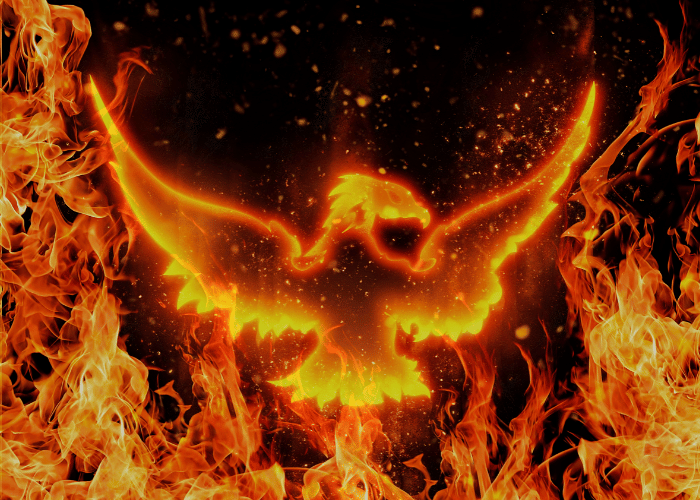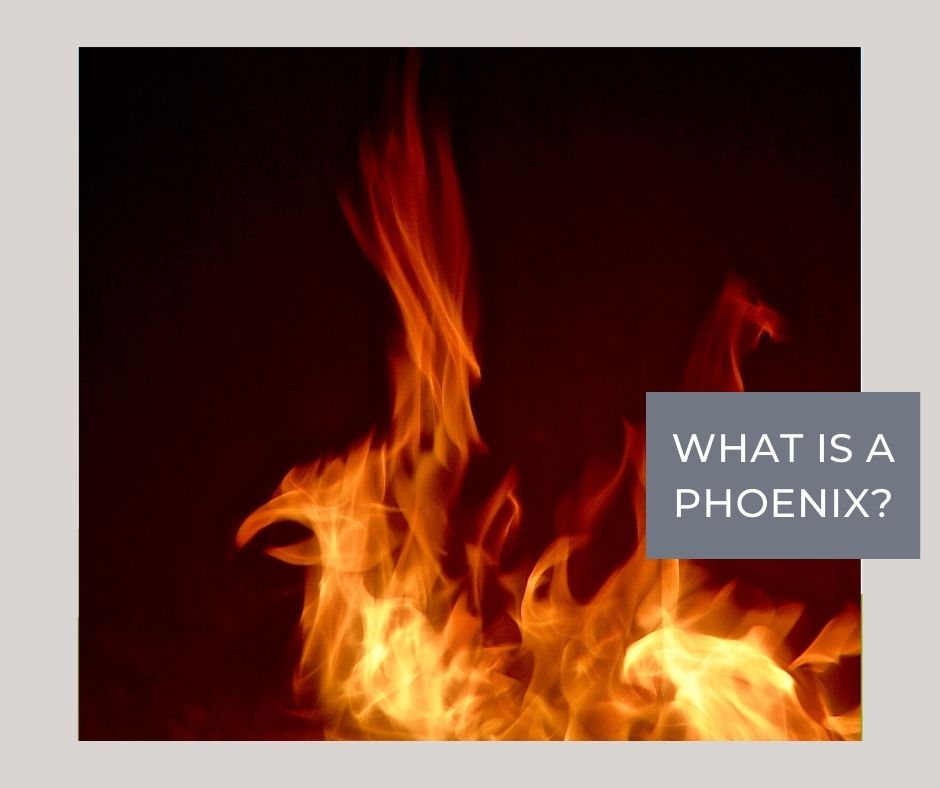What is a Phoenix
Table of Contents
So, you’re curious about the phoenix; the mythical bird that’s been igniting our imaginations for centuries now. A phoenix is a mythical bird that, according to Greek mythology, possesses the power of reincarnation. Brought back to life from its own ashes, this graceful creature symbolizes renewal, resurrection, and infinity.
First off, let’s untangle where the legend comes from. Originating from ancient Egypt, the tale of the phoenix originally represented the sun, which dies every night only to be reborn every morning. The bird was later adopted into Greek mythology where it found its everlasting fame.
Fasten your seatbelt, we’re about to soar into the dazzling world of the phoenix. Hold on tight as we explore its many symbolic meanings, how it’s portrayed across different cultures, and why it remains such a powerful figure in our collective imagination!

The Mythical Story Behind Phoenixes
Phoenixes are pretty fantastic creatures, aren’t they? These mythical birds spark our imaginations with their vibrant plumage and incredible life cycle that truly sets them apart. But how much do you really know about the story behind these intriguing beings? Let’s dive in.
The tale of the phoenix originates from ancient Greek mythology, where it’s depicted as a unique bird with fiery, awe-inspiring feathers and a life span of hundreds of years. The most fascinating part of its existence? It has an extraordinary ability to rise from its own ashes. Imagine this: After living a life that can span anywhere from 500 to 1461 years (depending on the mythology), the bird suddenly combusts into a burst of flame and transforms into ashes.
But that’s not the end! The phoenix possesses the remarkable ability to be reborn from its own ashes. Yup, you heard that right! A new phoenix chick emerges from the ashes, symbolizing rebirth and the cyclical nature of life, death, and resurrection.
Now before you start wondering whether your canary might have hidden superpowers, it’s important to remember that the phoenix is pure myth. There’s no real bird that can burst into flame and reemerge. However delightful or terrifying (depending on how you look at it), that image might be, it’s purely a symbol seeped in ancient stories.
The phoenix has been revered in various cultures, each infusing their unique interpretations and attributes. In ancient Egypt, for instance, the Phoenix was associated with the sun god Ra and symbolized renewal and resurrection. In old Chinese folklore, the phoenix, or ‘Fenghuang’, represented virtue, power, and prosperity.
The tale of the phoenix teaches us about resilience and the cyclical nature of life. It’s a testament to the power of rebirth, transformation, and the promise that no matter how tough things get, there’s always a chance to rise again. So next time you see a depiction of this mythical firebird, remember, it’s not just a catchy symbol in a book or movie. It’s an ancient sign of hope, rebirth, and the enduring cycle of life. You’ve got a bit more ammo for your next trivia night, don’t you? Now that’s something worth squawking about!
Characteristics of a Phoenix
Hey there! What’s the big deal about a phoenix, you ask? Here’s the scoop.
First things first: a phoenix isn’t your average bird. They’re steeped in legend and are known for their radiant beauty. Many believe that these creatures glitter like in tongues of flame or like sunlight made solid – yeah, we’re talking serious sparkle.
Now, let’s dive into the main event: the life cycle. You’ve probably heard rumors and whispers: “These birds are reborn from their own ashes,” and guess what? It’s true! A phoenix’s life doesn’t just stop at ol’ age. Instead, they combust in a fiery spectacle and then, voila! They pop back up as a newborn chick from the ashes. This process is pegged around every 500 years! Doesn’t that beat the pants off your standard pet parakeet?
Let’s see these numbers side by side, shall we?
| Phoenix | Usual Bird |
|---|---|
| 500 years | Depends on species |
They’re also said to have healing tears. Yes, you read that right, their tears have healing properties. Legend claims that a single tear from these magnificent creatures can heal any wound. There’s no modern science to back this, but if we’re already accepting age-defying, self-combusting birds, a little magical healing doesn’t seem too far off, does it?
In terms of social habits, phoenixes are, pardon me, a bit of a loner. They’re oftentimes depicted as solitary creatures. Now, who wouldn’t want a break from social niceties if they lived for 500 years?
And for the finale, for those music lovers out there, these creatures are known for their enchanting and hauntingly beautiful song. Sounds like a one-bird-band, doesn’t it?
To recap here are some key points on Phoenix
- Radiant beauty that sparkles
- Life cycle of about 500 years
- Healing tears
- Known to be solitary creatures
- Beautiful song
Remember, there’s more than meets the eye when it comes to a phoenix. Just because they’re not filling your backyard birdfeeder doesn’t mean they’re not out there, being all mystical and stuff! Happy myth busting, your Phoenix expert!

The Phoenix in Ancient Cultures
Ever wondered where the mythical bird, the phoenix, originates from? You’re not alone! Its origins are truly enchanting, dating back to ancient times and spanning various cultures.
First stop on our historical journey is Egypt. Here, a long time ago, a beautiful bird named the “Bennu” captivated scholars and religious practitioners alike. It was believed to be the ba (or soul) of the sun god, Ra. The Bennu’s resurrection every 500 years was a powerful symbol of rebirth, renewal, and the indestructible life.
Moving on, we find the phoenix in the ancient Hellenistic world (the Greeks to you and me). Here, they named it the “φοίνιξ”, likely inspired by the Egyptian Bennu. In this cultural context, the phoenix was seen as a symbol of regeneration and eternal life.
Finally, across the ocean in China, we discover our beloved phoenix took on even more forms. In fact, in Chinese mythology, the phoenix has not one but a few counterparts!
- The Feng is the male bird, symbolizing happiness and unbiased judgement.
- The Huang is the female, conveying beauty and grace.
- Together, they form the Fenghuang, the immortal bird of Chinese legend.
No matter the culture or time period, there’s a common thread to the mythology of the phoenix. It’s always an emblem of rebirth, immortality, and enduring resilience. Isn’t it fascinating how one symbol can tie together a variety of cultures over centuries?
Remember, while the mythology varies from culture to culture, they all share the idea of the phoenix. A beautiful, blazing immortal bird that rises from the ashes, symbolizing an eternal cycle of renewal and resilience. It’s pretty powerful stuff when you think about it.
Next time you see a phoenix emblem or image, recall its age-old, cross-cultural significance. And who knows, maybe it’ll inspire you to dust off your own feathers and rise anew!
Symbolism and Meanings Attached to Phoenixes
Unveiling the depth of the Phoenix symbolism, it’s enthralling to see the variety of interpretations across different cultures. Primarily, the Phoenix is a symbol of rebirth, purity, and the indomitable spirit of survival against all odds.
First off, let’s go oriental. You’ve probably stumbled upon the Phoenix in Chinese mythology. And you rightfully guessed it, the Phoenix or “Feng Huang” was a mark of emperors and embodied grace, virtue, and power. It was believed to bring harmony and balance. One beautiful bird, right?
Now, how about a flight to Greece? Their Phoenix had a slightly different flavor. Dazzling in a spectacle of flames, the Greek Phoenix was said to live for 500-600 years before dying in flames and rising from its own ashes, symbolizing eternal rebirth. It’s all about getting back up again regardless of how many times life gets you down.
Over in Egyptian mythology, the Phoenix or “Bennu” was associated with sun, creation, and renewal. They even related its life cycle with the sun’s journey across the sky!
Speaking of which, let’s look at the common threads in Phoenix symbolism:
- Rebirth: Every Phoenix story revolves around the bird’s unique life-death-rebirth cycle.
- Eternal life: The recurring cycle of resurrection symbolizes eternal life.
- Fire and Sun: The Phoenix’s fiery death and rebirth associate it with the sun.
Isn’t it fascinating how the Phoenix transcends across cultures, each painting a different stroke of its grandeur, yet all revolving around its central theme of rebirth and resilience? That’s the Phoenix for you, ever-changing, eternally constant!
Phoenix: Its Role in Modern Pop Culture
Ever flipped open a Harry Potter book? You might have been one step away from an encounter with a phoenix. Fawkes, Harry’s loyal feathered friend, is an unforgettable example of these fiery creatures in pop culture. You see, J.K. Rowling didn’t invent this mythical bird. It’s been part of human storytelling for centuries!
Phoenixes are hard to miss in the world of gaming too. If you’ve ever tried your hand at Final Fantasy, you might have come across a certain Phoenix Down. Ever wondered what that really means? Well, it’s a magical feather from a phoenix! A symbol of rebirth in the game, able to revive your fallen comrades.
Feeling the lyrics of Fall Out Boy’s “The Phoenix”? These iconic songs utilize the phoenix metaphor to signify personal transformation and resurgence. Once you listen closely, you’ll notice the tunes enjoy a cheeky nod to the phoenix’s legendary ability to rise from the ashes.
Movies have not been left out either. From the stunning adaptation of Jean Grey turning into the Phoenix in X-Men: Dark Phoenix to the mythical bird tie-in with death and rebirth in Harry Potter, the phoenix seems to be fluttering about everywhere you look!
Here’s a quick list of phoenix-inspired characters and items you might recognize in modern pop culture:
- Fawkes in Harry Potter
- Phoenix in X-Men
- Phoenix Down in Final Fantasy
- “The Phoenix” by Fall Out Boy
So, next time you pick up a fantasy novel, tune into an epic movie or dive into a videogame, keep an eye out for the phoenix. You’ll be surprised by the extent to which this legendary bird has weaved its fiery flight into our collective imagination over the years. Invincible, aren’t they, these creatures of myth and legend and the human imagination? Phoenixes will always rise, forever a symbol of resilience and rebirth in the vibrant world of pop culture.

Conclusion: Phoenix and Our Perception
So, what does this all teach us about phoenixes and our perception of them?
First and foremost, remember that a phoenix is more than just a mythical bird. Through various cultures and time, it’s symbolized resurrection, renewal, and endless life cycle. You might see it merely as a beautiful fictional creature, but for others it carries a profound spiritual and philosophical message.
- Phoenix embodies an undying spirit.
- It signifies endurance and resilience.
- It is seen as a beacon of hope and renewal.
Think about the phoenix next time you’re feeling down or stuck in a tough situation. Just like this magnificent bird, you can rise from the ashes anew. Life is full of ups and downs. But, isn’t it somewhat comforting to have symbols and metaphors like the phoenix to put things into perspective?
What’s more, the vibrant imagery and folklore surrounding phoenixes have greatly influenced art and literature.
Take a look:
- In literature, authors often use the phoenix as a symbol for a character’s rebirth or transformation.
- Artists grace their works with phoenix illustrations to express themes of rebirth, fire and divinity.
- Even in popular culture, phoenix symbolism is heavily used in movies and video games.
Hopefully, this unpacking of the phoenix and its symbolism has not only informed you, but also inspired you. Who knew such a mythical creature could hold so much meaning and allow for such a variety of interpretations?
Keep this in mind. The next time you spot the phoenix in a story, a painting, or even a company logo, you’ll now appreciate its full significance and why it’s there. Remember, phoenixes are all about renewal. So let’s take that as a cue to always be open to starting again, to learning, and to growing.
The story of the phoenix, in the end, is really a reflection of our own: full of highs and lows, marked by ends and beginnings, always changing, yet persistently resilient. Just like the phoenix, you are capable of rising above and starting anew. That’s what the phoenix teaches us, and that’s the power of its perception.






